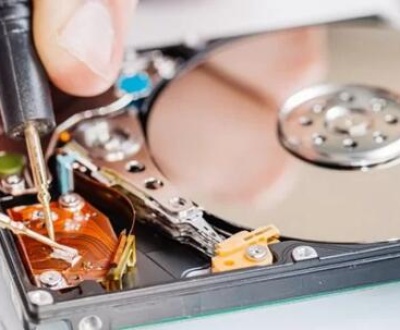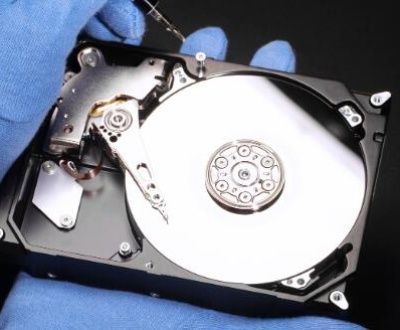A constantly filling up C drive can be caused by various factors, often due to system inefficiencies or unexpected data accumulation.
1. Windows Updates and Temporary Files
Reason: Windows updates and temporary files can quickly consume space. Large updates, even after installation, may leave behind unnecessary files that aren’t immediately removed. The temporary files that Windows and other applications create during normal operation can also add up over time.
Solution:
Run Disk Cleanup to delete temporary and old update files.
Open Settings → System → Storage → Temporary files, and clean up unnecessary files.
2. System Restore Points
Reason: Windows automatically creates system restore points to revert the system in case of a malfunction. These can take up significant space over time.
Solution:
Open Control Panel → System → System Protection → Configure. Here, you can reduce the amount of disk space allocated for restore points or delete old restore points.

3. Hibernation File (hiberfil.sys)
Reason: The hiberfil.sys file is used by Windows for hibernation mode, storing the state of the system. This file can be large, especially on systems with a lot of RAM.
Solution:
If you don’t use hibernation, you can disable it: Open Command Prompt as administrator and type:
powercfg -h off.
This will delete the hibernation file and free up space.
4. Page File (pagefile.sys)
Reason: Windows uses a page file as virtual memory, and its size can grow depending on system usage. If you have a large page file, it could be consuming considerable space on your C drive.
Solution:
To adjust the size of the page file, go to Control Panel → System → Advanced system settings → Performance settings → Advanced → Virtual Memory, and modify the page file size.
5. Software and Game Installations
Reason: Many applications, games, and software installers are defaulted to the C drive. Some programs also download large amounts of data or cache files without notifying the user. Even programs like photo or video editors can use temporary cache that builds up over time.
Solution:
Manually uninstall unnecessary programs: Open Settings → Apps, and remove unused programs.
Move large software or game installations to other drives or partitions.
6. Duplicate and Large Files
Reason: Unknowingly, you may accumulate duplicate files, videos, backups, or large files on the C drive.
Solution:
Use a tool like WinDirStat or TreeSize to visualize disk usage and locate large or duplicate files.
Move non-essential files to external drives or cloud storage.
7. Browser Cache
Reason: Web browsers cache data to speed up browsing. Over time, this cache can grow significantly, especially if you stream media or download content.
Solution:
Clear your browser’s cache and cookies: For example, in Chrome, go to Settings → Privacy and Security → Clear Browsing Data, and remove unnecessary data.
8. Antivirus and Backup Software
Reason: Some antivirus software and backup tools store logs, quarantined files, or backups on your C drive, which can accumulate over time.
Solution:
Check your antivirus or backup software settings and clear old logs, backups, and quarantined files.
Make sure the software is configured to save backups on a different drive if possible.
9. System Logs and Error Reports
Reason: Windows maintains detailed logs and error reports. If your system is frequently generating errors, logs can build up, taking valuable space.
Solution:
Open Command Prompt as an administrator and use the command:
cleanmgr /sageset:50
Then choose options like “System logs” and “Error reports” to clean them up.
10. Windows.old Folder
Reason: After major Windows updates or upgrades, a folder named Windows.old is created, containing a backup of the previous version of the operating system. This folder can be large, sometimes taking up tens of gigabytes.
Solution:
Use Disk Cleanup to delete the Windows.old folder: Open Disk Cleanup → Clean up system files → Check “Previous Windows installation(s)” and delete it.
11. Malware or Viruses
Reason: Malware and viruses can consume disk space by downloading unwanted files, generating error logs, or spreading across your storage. Some may even create hidden files that aren’t immediately visible.
Solution:
Run a full antivirus scan with trusted software like Windows Defender or third-party tools (e.g., Malwarebytes) to identify and remove malware.
12. Corrupted Files or Infinite Loop Issues
Reason: Sometimes, programs might misbehave and generate massive logs or temporary files in an infinite loop. For example, failed backups or syncing apps can continuously create copies of files.
Solution:
Identify the misbehaving program, and restart or reinstall it.
Check log files from apps that frequently crash or malfunction.
13. Large Download and Media Files
Reason: You might have downloaded large files (movies, music, ISO images) that accumulate without noticing. Media players and other services like Spotify or Netflix might also download large amounts of content for offline use.
Solution:
Regularly clear out your downloads folder or move media files to external drives.
Check streaming applications and configure them to store offline content on a different drive.
14. User Profile Data and Desktop Bloat
Reason: If you store files directly on your desktop or within your user profile (like Documents, Pictures, or Downloads), these can grow large without your knowledge. The user profile is typically stored on the C drive, contributing to space consumption.
Solution:
Move files from your desktop and user folders to another drive or external storage.
Set your default save location for documents and media to a different partition or drive.
15. System File Corruption or Bad Sectors
Reason: In rare cases, system file corruption or hard drive errors can cause space to be reported inaccurately. Bad sectors on a hard drive can become unusable, leading to misrepresented space availability.
Solution:
Run a disk check: Open Command Prompt as administrator and type chkdsk /f /r to scan and fix errors on your hard drive.
If issues persist, consider replacing the drive if it is physically damaged.
Your C drive may fill up due to multiple reasons, ranging from normal system behavior to problematic processes. A combination of cleaning up unnecessary files, tweaking settings, and potentially upgrading to a larger storage solution can help manage space better. Regular maintenance using tools like Disk Cleanup, uninstalling unused software, and monitoring with utilities like WinDirStat can prevent this issue from recurring.
About us and this blog
Panda Assistant is built on the latest data recovery algorithms, ensuring that no file is too damaged, too lost, or too corrupted to be recovered.
Request a free quote
We believe that data recovery shouldn’t be a daunting task. That’s why we’ve designed Panda Assistant to be as easy to use as it is powerful. With a few clicks, you can initiate a scan, preview recoverable files, and restore your data all within a matter of minutes.
Subscribe to our newsletter!
More from our blog
See all postsRecent Posts
- Data recovery salt lake city utah 2025-04-18
- Data recovery sacramento 2025-04-18
- Data recovery miami 2025-04-18

 Try lt Free
Try lt Free Recovery success rate of up to
Recovery success rate of up to









